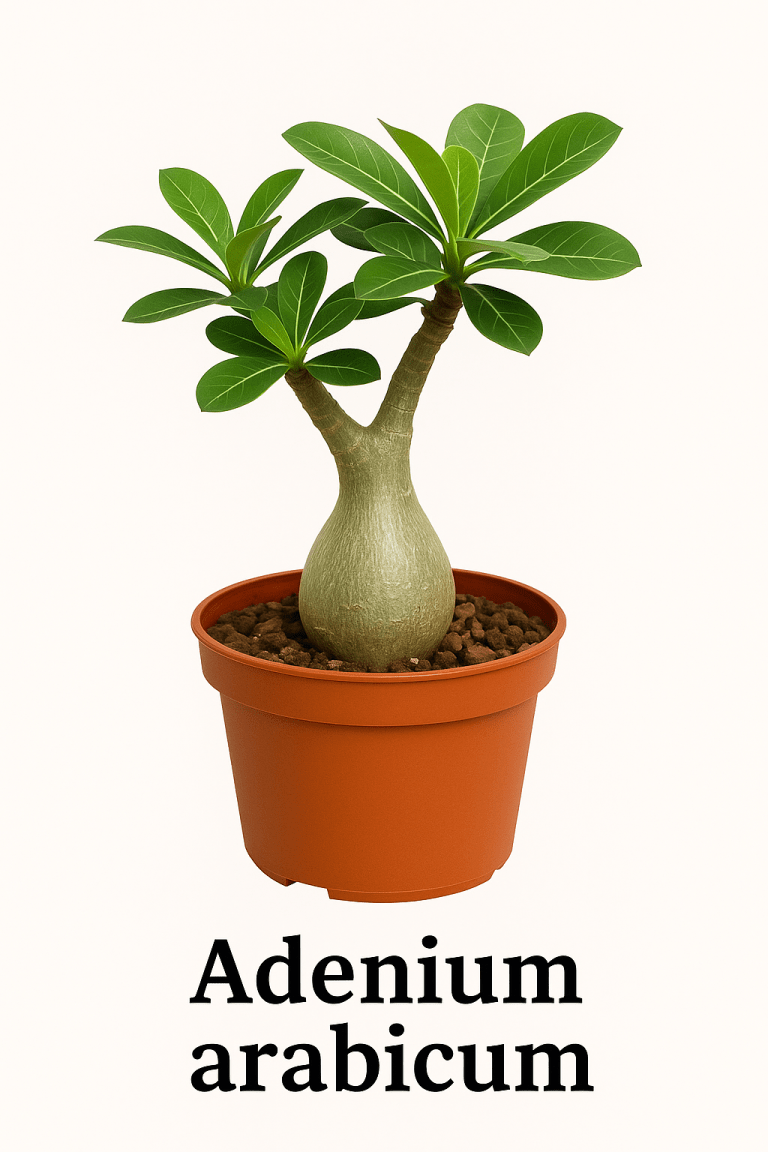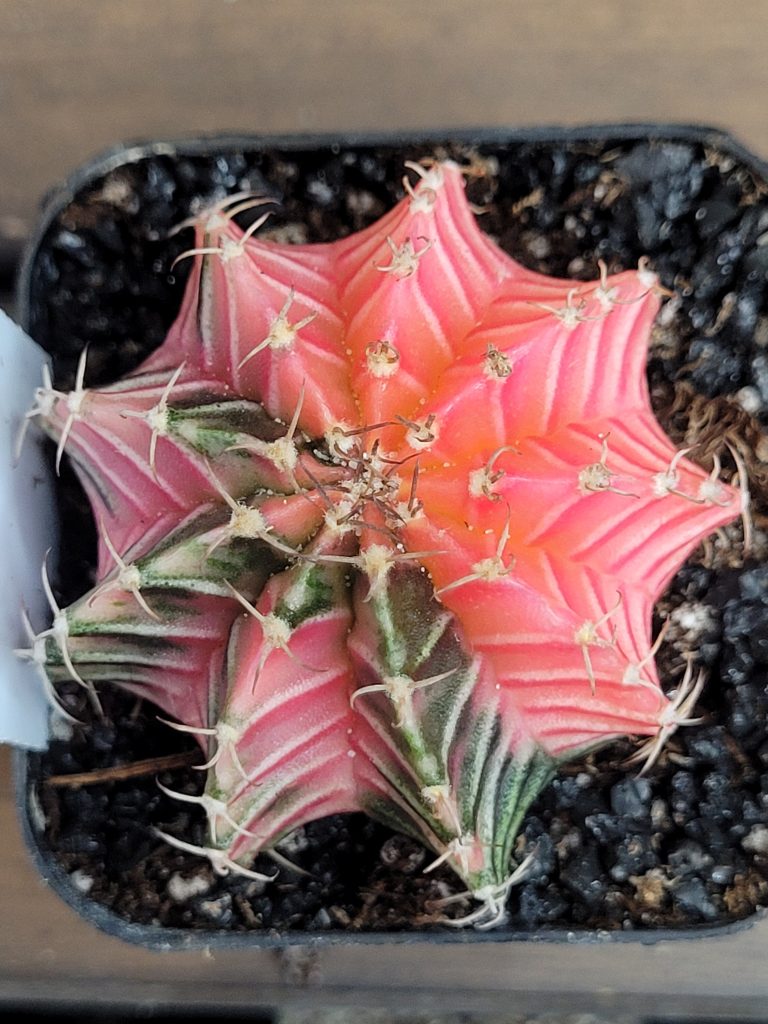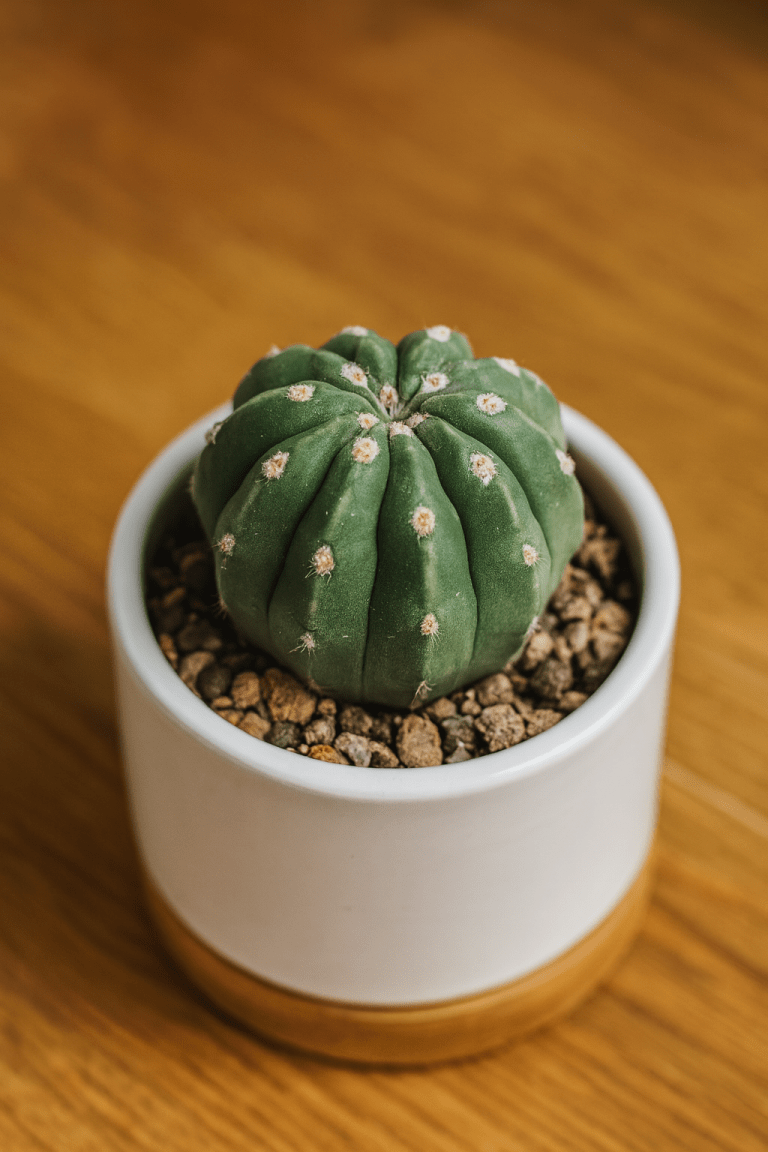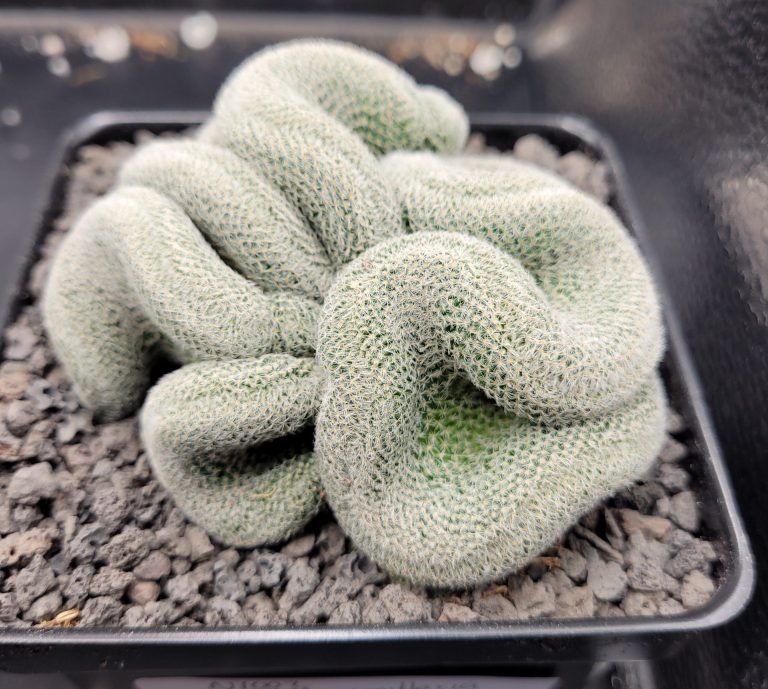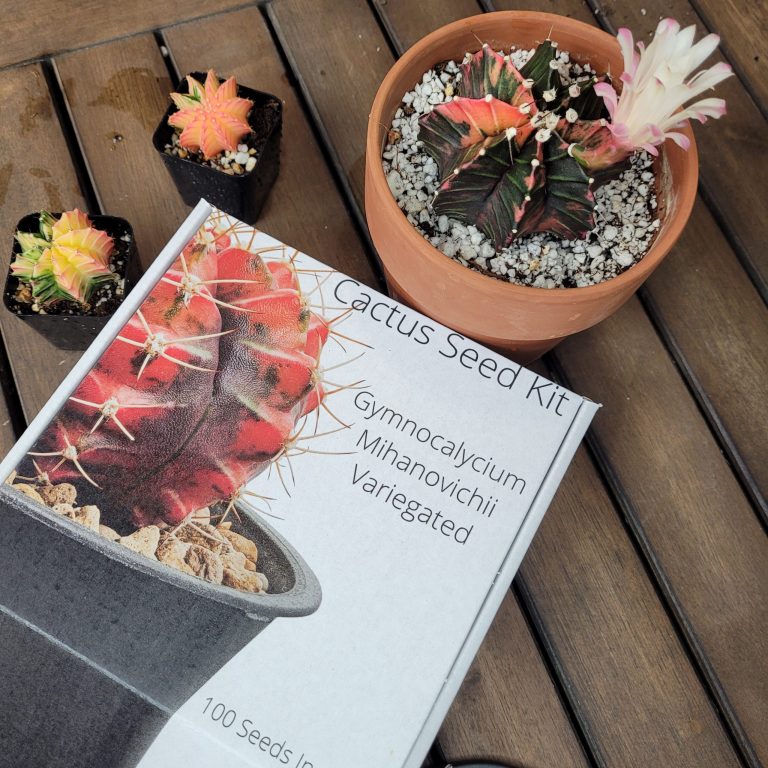The Gymnocalycium mihanovichii monstrose transformer is a unique and fascinating cactus variety known for its quirky, irregular growth patterns and striking appearance. This cactus, often referred to as the “Transformer” due to its unusual shapes and growth forms, is a spiny-free species, making it a great choice for those who prefer cacti without sharp defenses. Below, you’ll find a comprehensive care guide to help your transformer cactus thrive.
1. Light Requirements
The Gymnocalycium mihanovichii monstrose transformer loves bright light, but it can adapt to moderate lighting conditions as well. If you’re aiming to bring out its intense purple coloration, providing strong, direct sunlight is key. However, be cautious, as too much intense light can cause stress or sunburn. A sunny windowsill with some protection from the hottest part of the day (such as midday) works perfectly.
- Tip: Gradually introduce the cactus to bright light if it’s been in low-light conditions to avoid shock.
2. Watering
This cactus, like most, prefers to dry out between waterings. Overwatering is a common mistake, so be sure the soil is completely dry before watering again. In the cooler months, it may only need water every 4-6 weeks, while in the warmer growing season, you can water every 1-2 weeks.
- Tip: Water thoroughly, allowing excess water to drain out completely, but never leave it sitting in water as it may lead to root rot.
3. Soil
A well-draining cactus or succulent mix is essential for the Gymnocalycium mihanovichii monstrose transformer. This ensures that water doesn’t linger around the roots, which can cause rot. If you prefer a DIY mix, combine standard potting soil with perlite, sand, or pumice to enhance drainage.
- Tip: Consider adding a layer of gravel or pebbles at the bottom of the pot for extra drainage.
4. Temperature & Humidity
This cactus prefers warm temperatures and low humidity, mimicking its natural environment. It thrives in temperatures between 65°F and 85°F (18°C to 29°C). While it can tolerate cooler nights, avoid temperatures dropping below 50°F (10°C), especially for extended periods.
- Tip: If growing indoors, keep it away from cold drafts or air-conditioning units.
5. Fertilization
During its growing season (spring and summer), you can feed your cactus a diluted cactus fertilizer every 4-6 weeks. Avoid feeding in the winter when the cactus is dormant.
- Tip: Use a low-nitrogen fertilizer to prevent excessive, weak growth.
6. Growth Patterns & Appearance
One of the most intriguing aspects of this cactus is how it grows. The Gymnocalycium mihanovichii monstrose transformer develops in strange, unpredictable ways, often producing odd bumps and irregular shapes that make each plant truly one-of-a-kind. While the cactus generally stays compact, its irregular growth adds a lot of visual interest to any collection.
Additionally, under intense light, this cactus turns a beautiful shade of purple, adding another unique dimension to its aesthetic appeal. In lower light, it may retain more of its green color.
- Tip: Keep an eye on its growth and appearance, as sudden changes in its shape may indicate a need for adjustment in light or watering.
7. Repotting
Gymnocalycium mihanovichii monstrose transformer has a slow growth rate, so it won’t require frequent repotting. Every 2-3 years is sufficient, or when you notice it becoming root-bound. Choose a pot slightly larger than the current one with drainage holes to support healthy root growth.
- Tip: Repot in the spring, right before its active growing season begins.
8. Pests & Common Problems
While this cactus is relatively low-maintenance, keep an eye out for common cactus pests like mealybugs, scale, or spider mites. If you spot any, treat the plant with insecticidal soap or a homemade solution of water and mild soap.
- Tip: Proper airflow and dry conditions help prevent pests and diseases.
Conclusion
The Gymnocalycium mihanovichii monstrose transformer is a must-have for any cactus enthusiast, especially those who appreciate unique, spiny-free varieties that offer a dynamic and ever-changing appearance. With its strange growth forms and the potential to turn purple under intense light, this cactus is both a conversation piece and a resilient, easy-to-care-for plant. Follow these care tips, and your transformer will continue to surprise and delight you for years to come!

